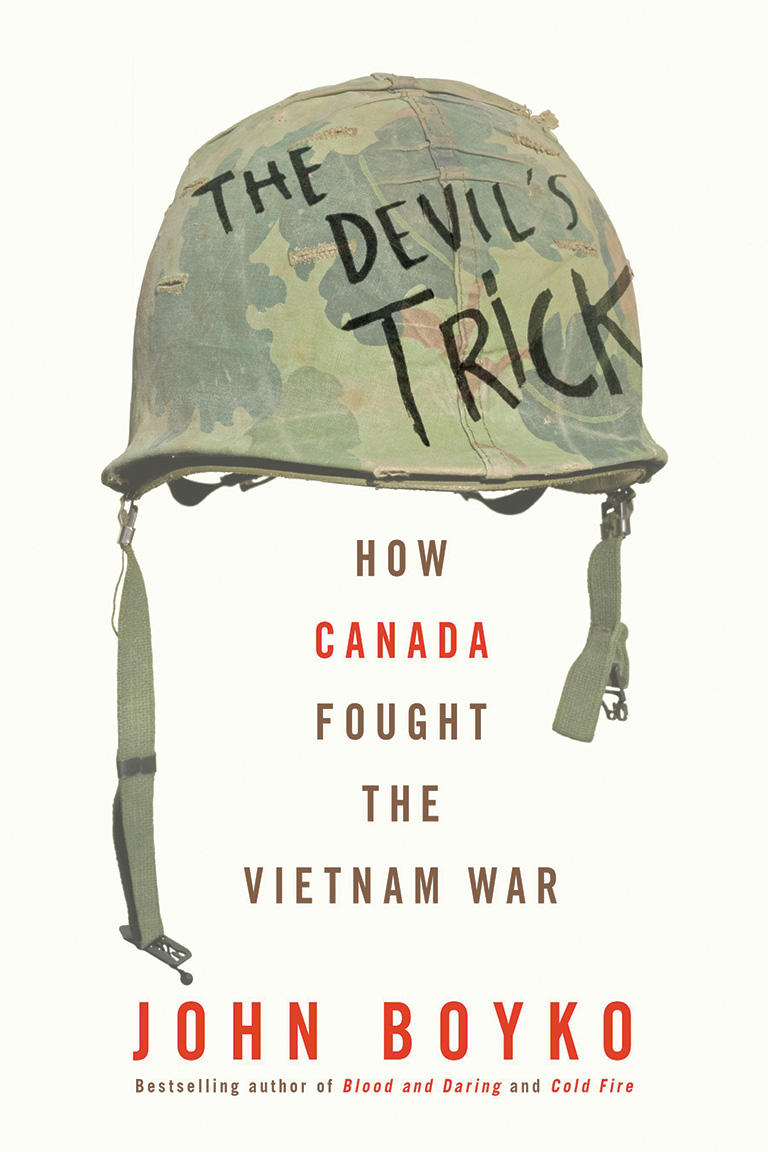The Devil's Trick

The Devil’s Trick: How Canada Fought the Vietnam War
by John Boyko
Knopf Canada,
256 pages, $32
At the end of January 1968, North Vietnamese forces launched eighty thousand troops into a hundred towns and cities in South Vietnam, including the capital, Saigon. The Communist north expected that the action would trigger a popular uprising and force the capitulation of the government in the south, which was then backed by nearly half a million U.S. troops. The Tet Offensive was the largest military operation by either side to that point of the Vietnam War.
The Americans claimed a tactical victory. The North Vietnamese declared a propaganda victory. But by then — four years into America’s third-bloodiest foreign war — nobody believed the administration of President Lyndon Johnson or his military advisors. They only believed CBS anchorman Walter Cronkite, who weeks later concluded: “The only rational way out will be to negotiate, not as victors but as an honourable people who lived up to their pledge to defend democracy and did the best they could.”
In the years since the war ended in 1973, libraries have filled their shelves with Vietnam War analysis. Retired military and political leaders have feathered their retirement nests with the proceeds of public-speaking tours. And filmmaking genius Ken Burns assembled the most compelling existing documentary on the subject.
Among the wealth of Vietnam War analysis, John Boyko’s The Devil’s Trick: How Canada Fought the Vietnam War deserves a respected place. That’s not because he investigated more than Cronkite or documented better than Burns but because, not forcing his readers to love the war or to hate it, Boyko’s book introduces six “guides” — Canadians and others who came to Canada — who invite readers into the war each of them witnessed.
Brigadier General Sherwood Lett led the Canadian delegation to Geneva in the 1950s, determining the mandate of the International Control Commission that was put in place after the partitioning of Vietnam in 1954. Then, on the ground, he was charged with the thankless job of maintaining peace in Vietnam, where the United States exerted a strong influence and feared a domino effect in Southeast Asia — Communism tipping over one country at a time. On Lett’s heels, respected Canadian diplomat Blair Seaborn tried repeatedly to use his genuine connections with both U.S. and Canadian governments to troubleshoot and to broker peace among superpowers that wanted none of it.
Boyko gives voice to one Canadian who fought in Vietnam — Doug Carey — and one American draft dodger who chose not to — Joe Erickson. Each man struggled to adjust, the former fighting “in another man’s war,” the latter struggling when his marriage broke down and he searched for a place within the Canadian mosaic. Both experienced the culture of war and war resistance. Both suffered wounds of mind and body. They are truly the victims of the devil’s trick — the act of convincing people that war can be desirable, normal, or even necessary.
Boyko brings the Vietnam War into even clearer focus via the stories of Rebecca Trinh, an ethnic Chinese woman who sought refuge in Canada, and Claire Culhane, who oversaw a Canadian-sponsored medical facility in South Vietnam. Trinh’s dash from post-war Vietnam is the stuff of an action movie. Meanwhile, on the eve of the Tet Offensive, Culhane had just completed her last hospital rounds when a patient whispered, “The VC come tonight” (meaning the Communist Viet Cong guerilla movement). A bomb blast hours later threw her out of bed, as the war began to turn.
After a week of evacuating patients, Culhane admitted to her Vietnamese co-workers, “The best way I can help you is to go back home and try to stop the war.” As Boyko recounts, she did not rest. He says her activism, which included a writing campaign, a hunger strike, and lobbying Parliament, shaped “the national conversation about Vietnam.”
This book has many strengths. And, if a Canadian historian, reporter, Asia watcher, or diplomat in training ever needed a primer on placing the war in its time, Boyko’s first thousand words do the trick.
Themes associated with this article
Advertisement




